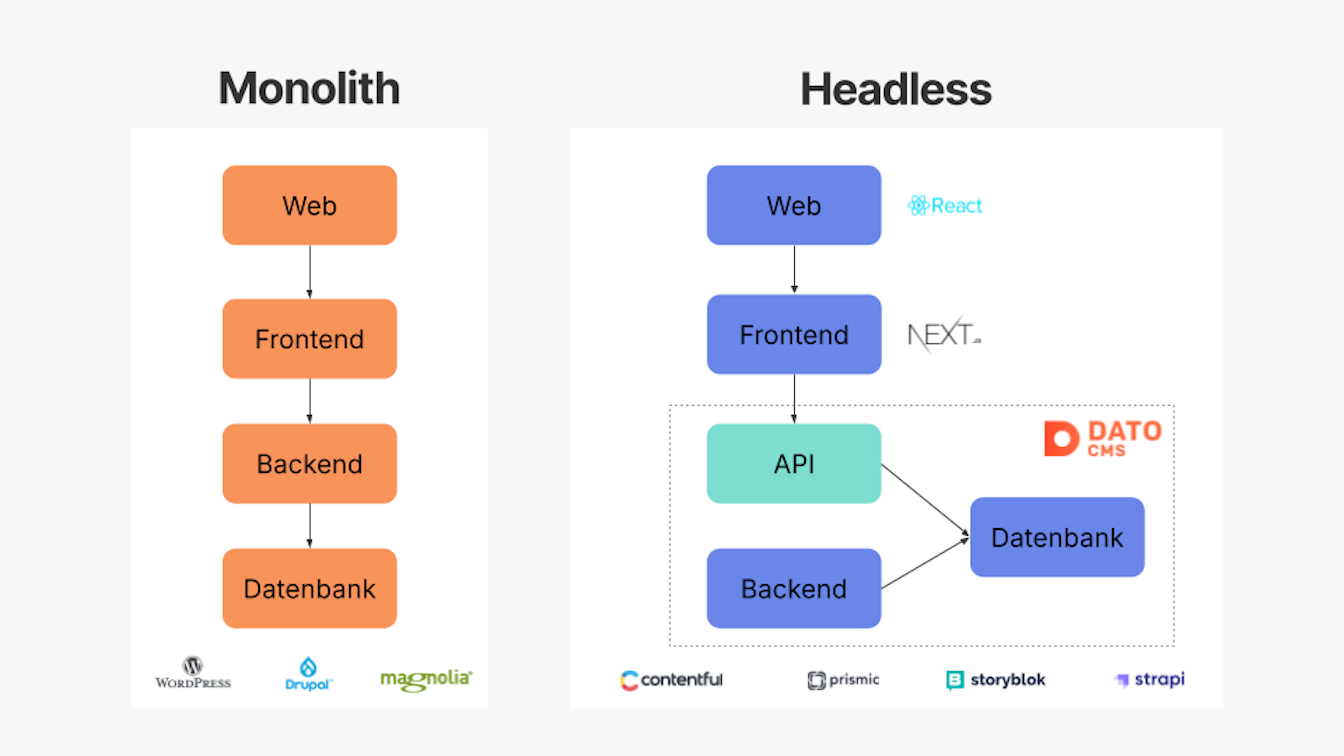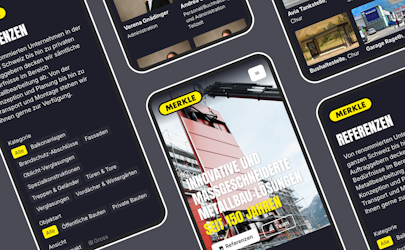What is a headless CMS?
A headless CMS takes care of managing your content - not displaying it. Instead of forcing a fixed front-end display like traditional CMSs (e.g. WordPress), the content is provided via APIs. This means it can be optimally prepared for different end devices and platforms.

Why a headless CMS?
In a world where content is published faster than ever before, traditional CMS systems like WordPress often don't offer the flexibility and security that modern businesses need. In contrast, headless CMS like DatoCMS or Prismic The separation of content and presentation makes it a dynamic and future-proof solution for content management.
Advantages of a headless CMS
Integrability 🧩
Headless CMS facilitate the exchange of content with other applications and services. They simplify the seamless linking of a variety of external systems, making integration into existing infrastructures easy.
Future-proof 🔮
Thanks to its decoupled architecture, Headless CMS can react flexibly to changes in the technology landscape. New output channels can be served without major changes, which protects investments in the long term.
Flexibility 🔄
Headless CMS offer unrivaled flexibility in content presentation by separating content management from content presentation. This separation makes it possible to choose the best technology for each sub-component.
This flexibility allows our development team to efficiently adapt the solution to changing requirements or preferences of your users.
Safety 🔐
By separating the backend and frontend, headless CMSs offer a lower risk of cyber attacks as attack surfaces are minimized. This separation means that the frontend that users see and interact with has no direct connection to data management and storage. This significantly reduces the opportunities for attacks to access sensitive backend data via the front end.
Scalability (performance) 🚀
With a headless CMS, your website scales easily as you grow. The display is left to a front-end framework such as Next.js. This allows the system load to be optimally distributed and performance bottlenecks to be avoided.
The decoupled architecture also enables simple serverless hosting and therefore horizontal scaling.

Frequently asked questions
How does a headless CMS work?
A headless CMS manages content and makes it available via APIs that can be used by any front-end framework (e.g. Next.js).
What headless CMS are there?
The leading providers include DatoCMS, Contentful and Prismic, which are characterized by their powerful APIs and user-friendly interfaces.
Why should I use a headless CMS?
A headless CMS offers increased security, improved scalability, seamless integration, enormous flexibility and is future-proof - ideal for dynamic and growing companies.
When does it make sense to use a headless CMS?
A headless CMS is the best choice, especially when there is a need for strong content distribution across multiple platforms and high security requirements.



